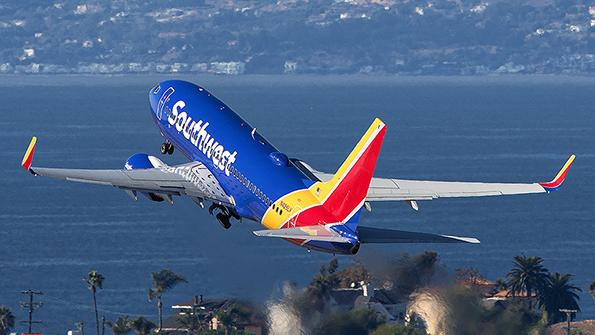ANALYSIS: LCCs' ability to adapt is key advantage in a crisis

The agility of LCCs is proving to be an advantage for many through the pandemic crisis, enabling them to adapt and react to the rapidly changing landscape and seek out pockets of demand.
LCCs operated around 244 million seats globally in the third quarter ending September 2020, OAG Schedules Analyser data shows, equating to about 51% of the capacity they offered during the third quarter of 2019. This was higher than full-service carriers, whose capacity was nearer to 47% of pre-pandemic levels during the 2020 third quarter.
Of course, the picture has varied from country to country, with nations that have strong domestic markets faring much better than those that rely on international traffic. Total LCC domestic capacity was down by just 38.1% in in the third quarter compared with 2019 levels, while international capacity declined by almost two-thirds.
In the US, the robust approach of Southwest Airlines helped to ensure the country retained its position as the world’s largest LCC market, despite recording the biggest numerical fall of seats the third quarter.
The number of low-cost departure seats in the US dropped by 38.1% to 55.4 million during the period, compared with 89.6 million 12 months earlier. The year-on-year reduction for full-service carriers was 55.8%.
The standout LCC market since the onset of the pandemic has been China, where the number of departure seats totaled 23.3 million between July and September, down by just 3.5% on the 24.2 million recorded last year. During the Golden Week holiday in early October, year-on-year LCC capacity was 5% higher than in 2019.
However, the OAG data reveals that 16 countries globally recorded no LCC departure seats during the quarter, while capacity was down by 95% or more in a further 15 places, including Argentina, Bolivia, Singapore and Uruguay.
Analyzing the figures by airline highlights the differing approaches being taken by LCCs to manage their networks. Of the top 10 largest LCCs in the world during Q3 2019, Southwest, Hungary-based Wizz Air and Florida-based Spirit Airlines have been the most bullish during Q3 2020, each one maintaining capacity levels above 60%.
Wizz has launched 250 new routes and announced 13 base openings since April, including stationing aircraft at London Gatwick and moving into domestic markets in Italy and Norway. An advantage for Wizz has been the relatively strong levels of VFR demand in its Central and Eastern European heartlands, making it less exposed to the drop in discretionary leisure than some of its rivals.
CEO Jozsef Varadi believes the “more pioneering, more entrepreneurial, more focused, more efficient players” like Wizz will come out on top.
“For us the recovery is going to be around a year—for the industry, two to three years,” he said.
Meanwhile, Dallas-based Southwest was the largest airline in the world by capacity for much of August and September, with CEO Gary Kelly vowing to pursue opportunities “aggressively but not recklessly.” The carrier offered more than two-thirds of its pre-pandemic seats in Q3 2020.
Contrast that with Norwegian Air Shuttle, which has retrenched, operating just 16.9% of its normal levels of capacity. The carrier, which has made a name for itself in recent years operating low-cost transatlantic services, does not expect to operate any long-haul routes during the entire winter 2020/21 season.
Although many LCCs have demonstrated they are nimbler than their legacy competitors in adding capacity to meet demand, they are equally willing to remove capacity when traffic diminishes or new travel restrictions come into force.
Ireland-based Ryanair, Europe’s largest LCC, slashed October capacity down to 40% of normal levels and is extending the capacity cut for the full winter season. Ryanair had previously expected to operate at 60% of 2019 levels between November and March.


